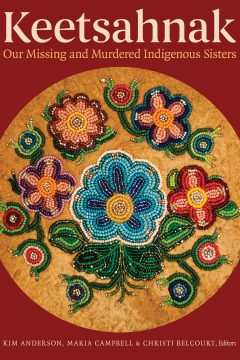On November 13, 1971 a Cree teenager, Betty Osborne, was walking home in The Pas, Man. when she was abducted by four white men, raped, and stabbed to death with a screwdriver. It took police 16 years to get a conviction. “One of the saddest aspects of the so-called police investigation was the fact that the police began their investigation within the Aboriginal community,” notes Keetsahnak: Our Missing And Murdered Indigenous Sisters. “When no suspects were found, the police dropped their investigation.”
The fact the justice system failed an entire class of Canadian citizens is undisputed. The RCMP count 1,017 Indigenous women murdered in the period from 1980 to 2012. No other identifiable group endured such violence. As low as expectations were of the National Inquiry into Missing and Murdered Indigenous Women, it at least fixed in the public mind that local tragedies like the murder of Betty Osborne are interconnected.
“I heard the Minister of Northern and Indigenous Affairs Canada say, ‘Racism and sexism in this country kills,’” writes contributor Christi Belcourt, an Alberta coordinator of Walking With Our Sisters. “The next day, the head of the RCMP admitted there were racist police officers in among the force. These are truths that Indigenous peoples have always known.”
Violence is woven through contemporary Indigenous life. Keetsahnak is a moving documentary of the raw centre of Canadian society. Contributor Sandra Lamouche, an Alberta educator, writes of her grandmother’s death at the hands of a drunk driver on the Bigstone Cree Nation: “Her body was thrown into the lake, only to be discovered a while later, frozen. This happened over fifty years ago and remains an unsolved murder case today.”
In another essay Was She Just A Dream? Writer Anne-Marie Livingstone of Victoria recalls the 1992 disappearance of her mother Elsie. “I sense that most people, especially white, middle-aged men, don’t like to hear about the issue of the missing women. Strangely enough, this demographic represents the majority of employees of the Vancouver Police Department, politicians and bureaucrats.”
Keetsahnak reads like Dostoevsky. It is haunting and eloquent. Writer Maya Ode’amik Chacaby, an educator at York University, tells her story in words that fall like a hammer on anvil: “Dirty Lying No Good Indian was the name given to me by my grandmother, an empty bitter husk of a woman whose spirit went missing in Residential School. I went missing when I was thirteen years old. No one came to look for me. No benevolent adults. No mourning family. I was not counted missing and I was not missed.”
“There is a tenuous space between Being Missing and Being Murdered. I lived there for over a decade. I remember it like a dream, that hypnagogic space, living in the death world, a spectral Indian ghosting the colonial wastelands, the slums, the seedy piss-filled corners and alcoves between walls and fences. Living between passing out in snow banks (latex boots frozen to skin) and death, between rape and death, drugs and death, cops and death, safe spaces and death, friends and death.”
“Missing but not missed. We are caught up, hooked in, counted, catalogued and fixed as objects. Not as sad pictures of missing children on milk cartons though. Fixed instead in the psychic disequilibrium of being a less than human human.”
“I was the harsh reminder that their system fails people like me.”
By Holly Doan
Keetsahnak: Our Missing and Murdered Indigenous Sisters, edited by Kim Anderson, Maria Campbell & Christi Belcourt; University of Alberta Press; 400 pages; ISBN 9781-77212-3678; $29.95






